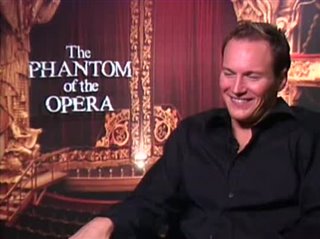

He then attacks her for talking to a man in her dressing-room. One story in particular remained impressed on Christine’s mind: the story of the Angel of Music, who can turn musicians into prodigies.Īt Perros, Raoul declares his love to Christine but she laughs at him. Together, they listened to local Breton legends and to Christine’s father’s stories. During trips to Normandy, Christine became acquainted with Raoul. After a man named Professor Valerius discovered his talent, he brought Daaé and Christine to Paris, where Christine soon developed her own musical talent as a singer. Christine’s father was a musical prodigy in Sweden, considered the best violin player in Scandinavia. During the journey, Raoul recalls their childhood. She tells him Raoul she will be at Perros-Guirec, the village in Normandy where they first met as children, and Raoul hurries to meet her there. Raoul writes Christine many letters, and Christine finally replies, saying that she does remember him after all. Overcome by jealousy, Raoul waits for Christine to leave so that he can confront this rival, but when the room opens, Raoul is shocked to discover that Christine’s dressing-room is empty. The man declares his love for her, and Christine, in turn, tells him that she has given him her soul. However, Christine pretends not to recognize him, and later, Raoul hears her talk to a man in her dressing-room. In the audience, Viscount Raoul de Chagny, Christine’s childhood friend, who is deeply in love with her, goes to talk with her backstage. Christine sings so beautifully that the public remains astonished, wondering why her talent has been hidden for so long. On the same evening, Christine Daaé, a little-known soprano, replaces her colleague Carlotta, who is ill.

The narrator concludes that these can hardly be considered “natural” circumstances, and that there must be another explanation besides suicide. Although his death is attributed to “suicide under natural circumstances,” when people arrive to retrieve his corpse they can find no sign of the rope. Moments later, chief stage machinist Joseph Buquet is found dead, hanging beneath the stage. In the 1880s, on Debienne and Poligny’s last night as Opera directors, chaos erupts when ballerinas claim to have see the Opera ghost. From the beginning, the narrator affirms that the Phantom does exist, but is in fact a human being, not a ghost.
THE PHANTOM OF THE OPERA 2004 SHOWTIMES SKIN
The Opera Ghost or Phantom has been said to appear as a black figure with a skull face covered in yellow, rotten skin with burning eyes. In the 1880s, strange events have been unfolding at the Paris Opera House, convincing people that the Opera must be haunted. Winner of the 2004 award for Best Female Breakthrough Performance (Emmy Rossum) by the National Board of Review (NBR).Gaston Leroux’s 1910 novel, The Phantom of the Opera, follows a narrator’s investigation into the actions and identity of the mysterious Phantom of the Opera. still holds an option on the North American distribution rights. Previous films based on the Phantom story include: the 1925 Universal Pictures production with director Rupert Julian, starring Lon Chaney Jr the Universal Pictures 1943 production, directed by Arthur Lubin the 1962 UK production with director Terence Fisher and starring Herbert Lom the Chinese 1986 production directed by Yang Yanjin and starring Zhai Naishe the 1989 American production directed by Dwight H Little, starring Robert Englund.Īndrew Lloyd Webber bought back the feature film rights to the property from Warner Bros. Released in United States on Video May 3, 2005 Limited Release in United States December 22, 2004Įxpanded Release in United States January 21, 2005 Released in United States Winter December 22, 2004


 0 kommentar(er)
0 kommentar(er)
